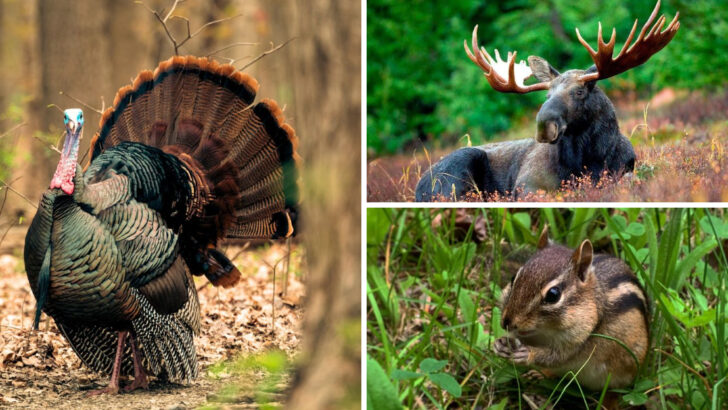Minnesota’s wilderness isn’t just a backdrop for your camping trip—it’s alive, watching, and sometimes, walking right past your tent. From towering moose to sneaky raccoons, the wild here isn’t shy about making an appearance. One moment, you’re roasting marshmallows, and the next, a curious fox is eyeing your snacks.
Some encounters will leave you breathless, like locking eyes with a wolf at dawn or hearing the eerie call of a loon echoing over the lake. Others might test your nerves—because let’s be honest, seeing a black bear stroll by is equal parts thrilling and terrifying.
But that’s the magic of camping in Minnesota. Every rustle in the trees and splash in the water is a reminder that you’re not alone out there. So keep your eyes open, your camera ready, and your food locked up tight—because these 21 wild creatures don’t just exist in the woods, they own them.
White-tailed Deer
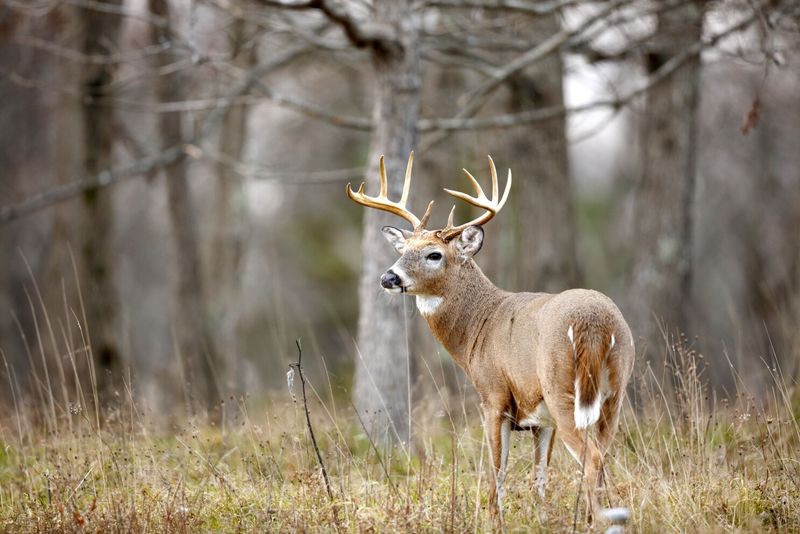
The white-tailed deer is a common sight in Minnesota’s forests. With their graceful movements and alert ears, they are often seen foraging for food in the early morning or late evening. Their distinctive white tail flashes as they bound through the underbrush, a warning to others of potential danger.
During the fall, bucks can be spotted with impressive antlers, a symbol of their maturity and strength. These creatures are not just a joy to watch but also play a crucial role in the ecosystem by aiding in plant growth through their grazing habits.
American Black Bear
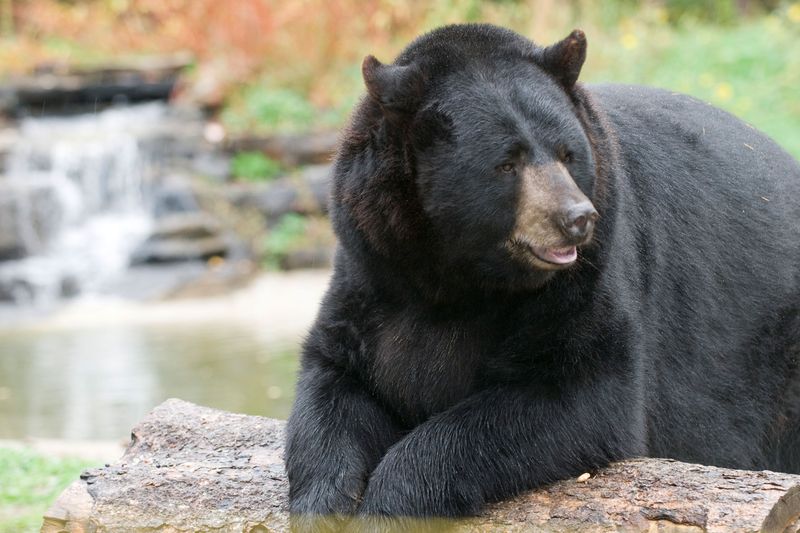
Encountering an American black bear while camping in Minnesota can be thrilling yet humbling. These bears, with their glossy black fur and curious nature, are often found near water sources, foraging for berries or catching fish.
Despite their large size, black bears are generally shy and will avoid humans when possible. However, it’s important to store food properly to prevent attracting them to campsites. Observing a black bear from a safe distance offers a unique glimpse into their solitary and resourceful lives, showcasing their adaptability in the wilderness.
Common Loon
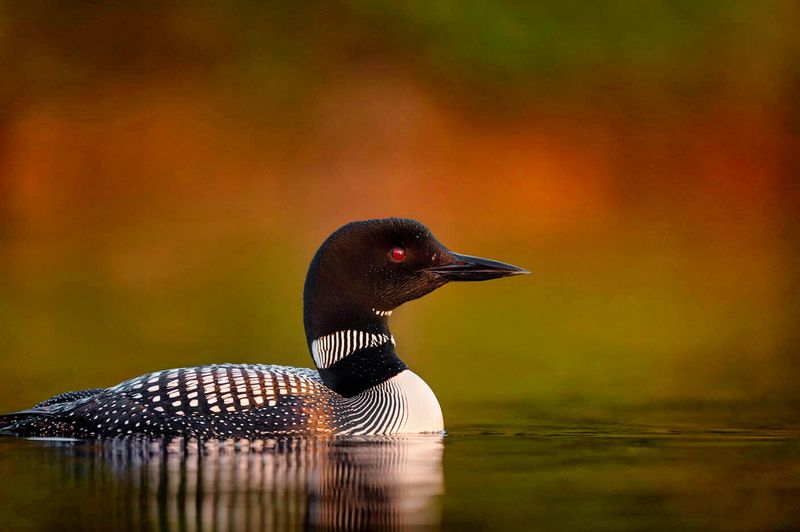
Minnesota’s state bird, the common loon, is known for its haunting calls that echo across the lakes. These black-and-white birds are expert divers, often disappearing underwater to catch fish.
Loons are mostly seen during the summer, with their chicks riding on their backs, creating a picturesque scene on the water. Their presence indicates a healthy aquatic environment, as they require clean, clear lakes to thrive. Camping by a lake where loons reside ensures an auditory experience like no other, with their distinct calls adding to the natural symphony.
Grey Wolf
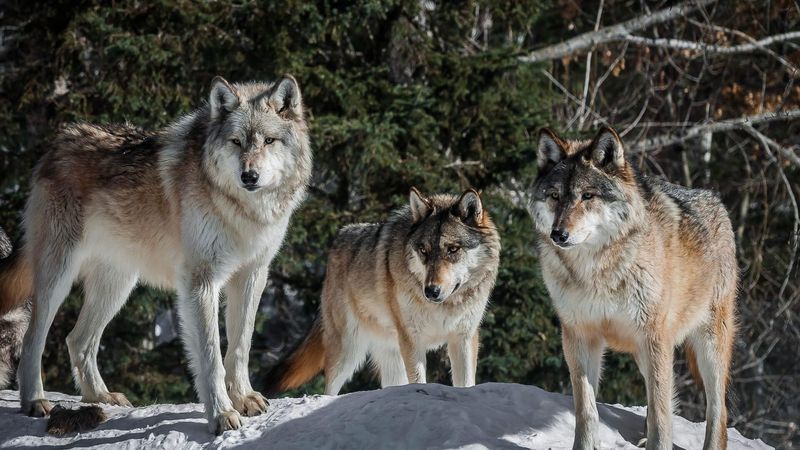
The grey wolf, a symbol of the wild, roams the northern forests of Minnesota. Known for their intelligence and pack behavior, wolves are apex predators that play a vital role in maintaining the ecological balance.
Spotting a wolf in the wild is a rare treat, often happening during the quieter hours of dawn or dusk. Their haunting howls can be heard echoing through the trees, a sound that marks their territory and communicates with pack members. Observing their tracks in the snow provides campers with the thrilling knowledge of sharing the wilderness with these majestic creatures.
Bald Eagle
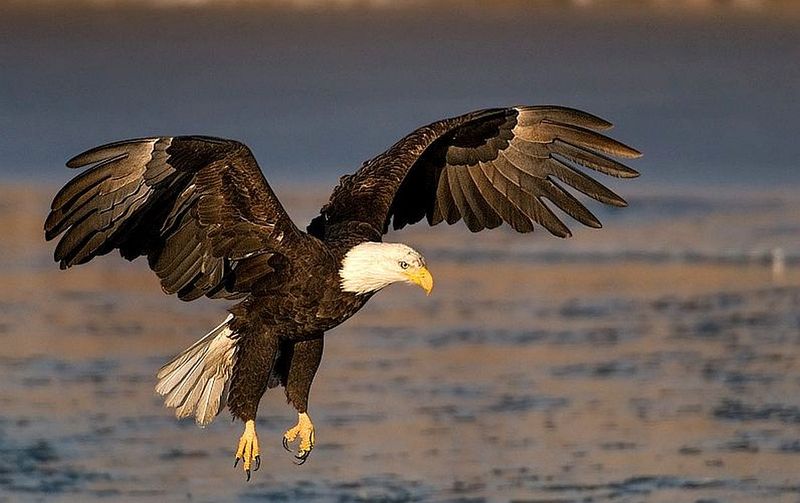
The bald eagle, America’s national bird, is a majestic sight in Minnesota’s skies. With their striking white heads and large wingspans, these birds are often seen near large bodies of water, where they hunt for fish.
Watching a bald eagle soar is an awe-inspiring experience, as they glide effortlessly, scanning the water below. Lucky campers might witness one diving to snatch a fish from the water, showcasing their incredible hunting skills. The presence of bald eagles indicates a healthy ecosystem, as they require ample food and nesting sites to thrive.
Red Fox
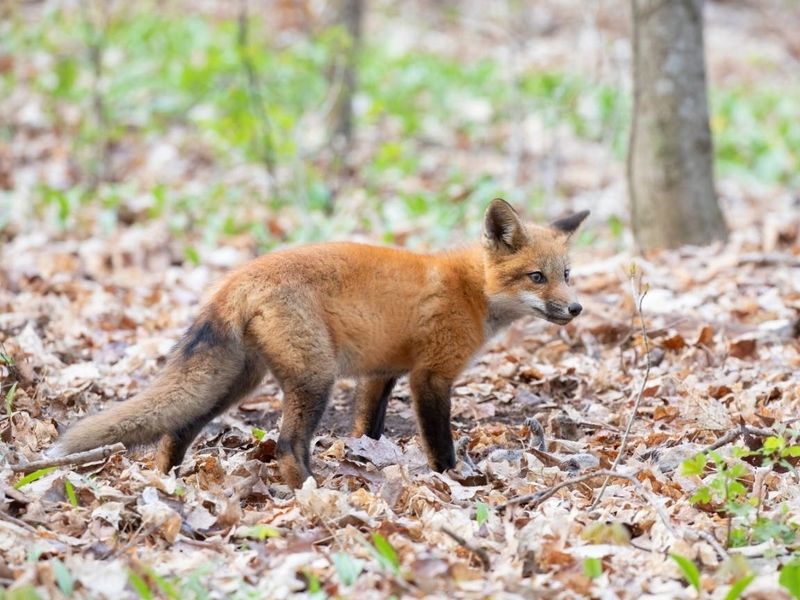
The red fox is a cunning and adaptable creature, often glimpsed at the edges of forests and fields in Minnesota. Known for their bushy tails and reddish fur, these foxes are active primarily at dawn and dusk.
Observing a red fox hunt is fascinating, as it pounces on its prey with precision and speed. They are omnivores, consuming a variety of foods including small mammals, birds, and fruits. Their playful nature and inquisitive behavior make them a delightful sight for campers, often leaving behind tracks and signs of their nocturnal adventures.
Moose
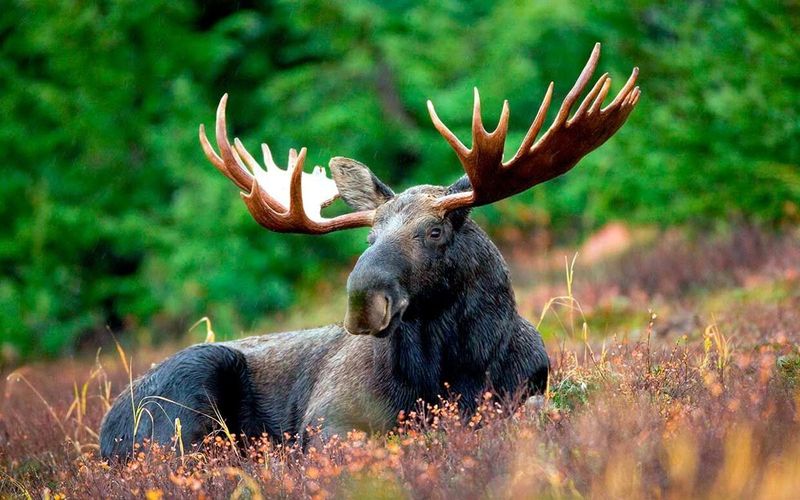
Moose are the largest members of the deer family and a symbol of Minnesota’s untamed wilderness. These giants are often found near water, feeding on aquatic plants during the warmer months.
Despite their size, moose are elusive and can disappear into the forest with surprising speed. Observing a moose from a safe distance offers insight into their solitary habits and diet. With large, paddle-shaped antlers, the males are especially impressive during the fall rut. Their presence indicates a healthy habitat, as moose require large territories and ample food sources.
Beaver
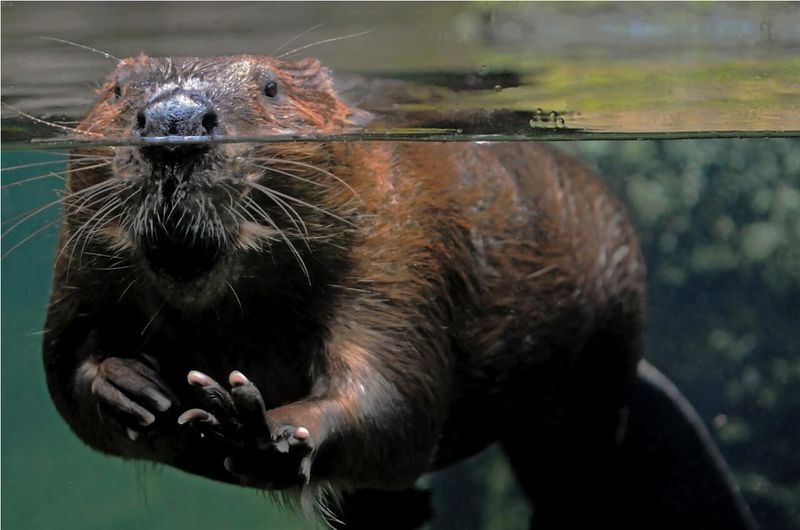
Beavers are nature’s engineers, transforming Minnesota’s waterways with their dam-building prowess. These industrious animals use their sharp teeth to fell trees and create habitats that benefit many other species.
Watching a beaver at work is a testament to their determination and skill. Their dams create ponds that serve as ecosystems for various plants and animals. Beavers are mostly nocturnal, so the best chance to see them is during the early evening or morning. Their activities highlight the interconnectedness of species and the importance of biodiversity within the camping landscape.
Wild Turkey
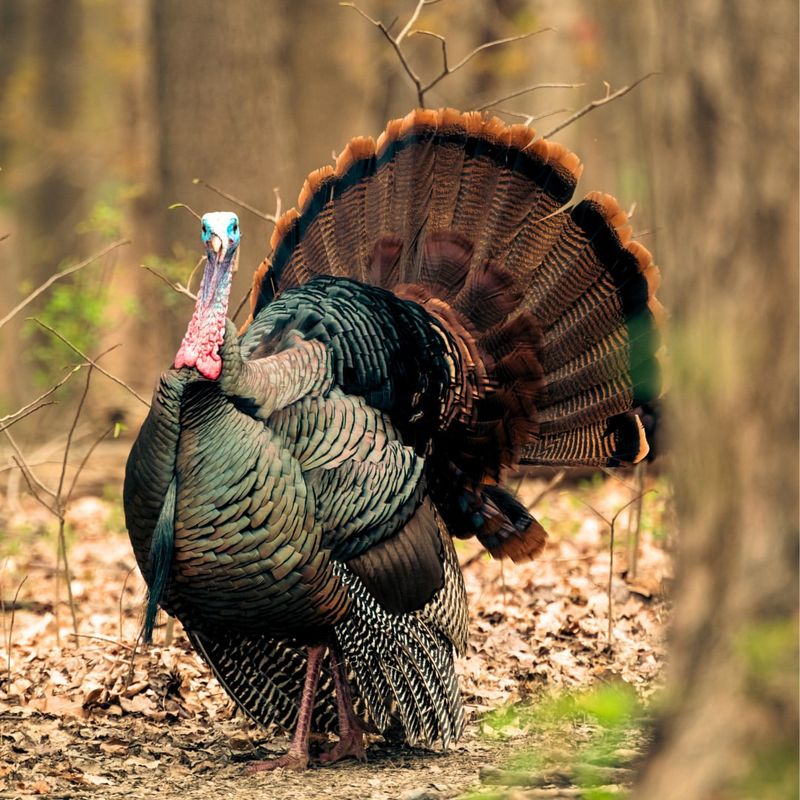
Wild turkeys are a familiar sight in Minnesota’s woodlands, known for their distinctive gobbles and feathered displays. These birds forage on the forest floor, searching for seeds, insects, and berries.
Watching a male turkey, or tom, display his feathers in a courtship dance is a captivating experience. Their social nature often results in groups foraging together, providing a dynamic and engaging spectacle for campers. Turkeys contribute to the forest ecosystem by aiding in seed dispersal. Their presence adds to the diversity of birdlife that campers can enjoy while exploring Minnesota’s wilderness.
Raccoon
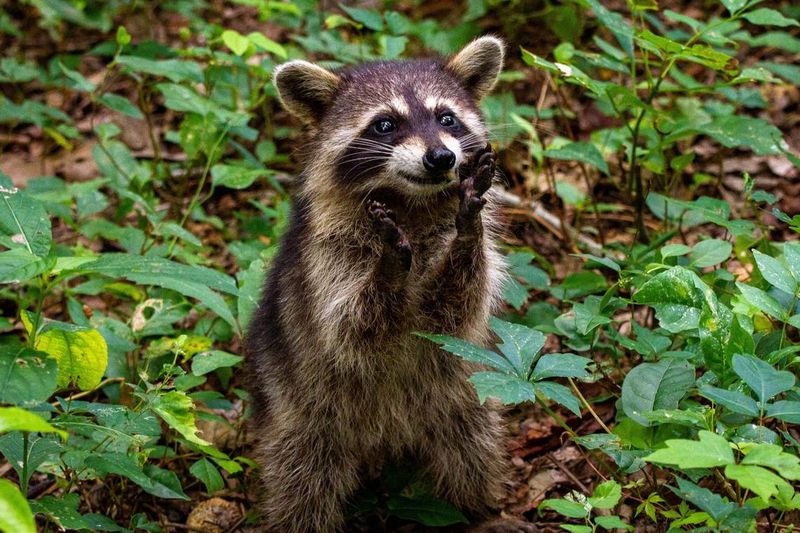
Raccoons are curious and clever creatures, often seen near campsites in Minnesota. With their masked faces and dexterous paws, raccoons are adept at finding food, which sometimes leads them into human areas.
Observing raccoons can be entertaining, as they are known for their problem-solving abilities and social interactions. However, campers should secure food to avoid attracting these nighttime visitors. Raccoons play a role in controlling insect and small rodent populations, contributing to the ecological balance. Their adaptability and resourcefulness make them a fascinating subject to observe during camping adventures.
Eastern Chipmunk
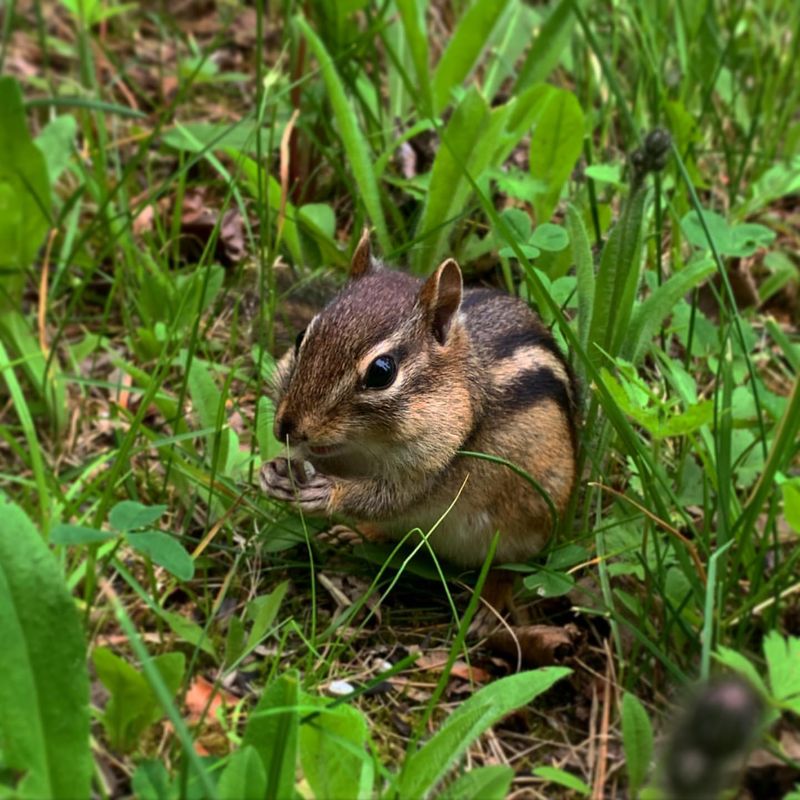
The eastern chipmunk, with its tiny stature and cheek pouches, is a charming inhabitant of Minnesota’s forests. These small creatures are constantly busy, collecting nuts and seeds to store for the winter months.
Watching a chipmunk fill its cheeks with food is a delightful sight, showcasing their industrious nature. Their burrows provide shelter and storage, playing a role in aerating the soil and dispersing seeds. Chipmunks are diurnal, making them a common sight during hikes through the woods. Their presence adds a touch of liveliness and energy to the forest floor.
Great Horned Owl
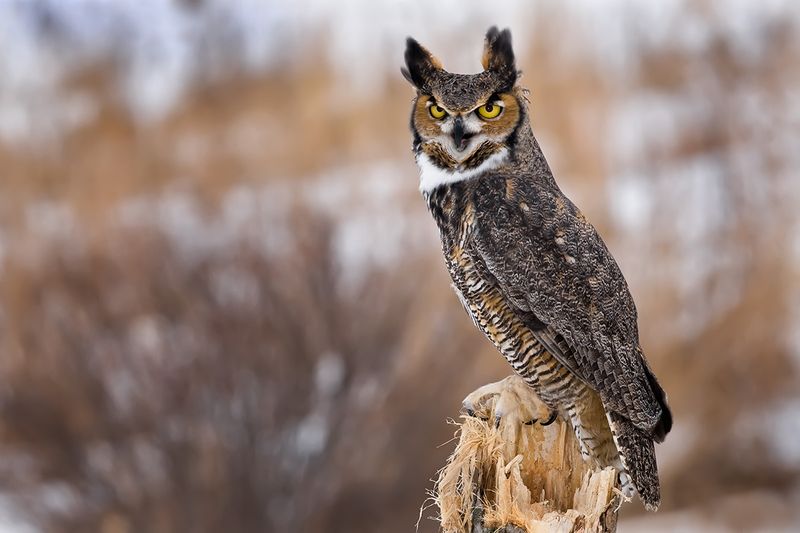
The great horned owl is a powerful nocturnal predator that commands respect in Minnesota’s forests. Known for their tufted ‘horns’ and large yellow eyes, these owls are skilled hunters, preying on a wide variety of animals.
Hearing their deep hoots echo through the night is both eerie and enchanting. Spotting a great horned owl requires patience and a keen eye, often best done at dusk or dawn. These owls play a crucial role in controlling rodent populations, highlighting the balance of predator and prey in the wilderness. Their presence is a testament to the thriving nocturnal life in the forest.
Porcupine
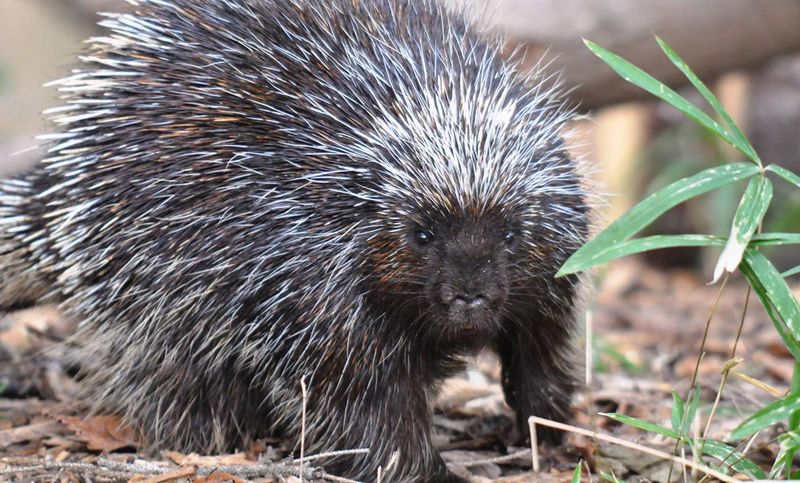
Porcupines, with their quilled appearance, are a unique sight in Minnesota’s woods. These slow-moving creatures are primarily nocturnal and can often be found climbing trees in search of food.
Their quills serve as a defense mechanism against predators, making them a fascinating subject for observation. Porcupines feed on bark, leaves, and twigs, playing a role in the ecosystem by controlling vegetation growth. Seeing a porcupine in its natural habitat offers insight into its solitary and peaceful nature, reminding campers of the diverse life that thrives in the forest.
Timber Rattlesnake
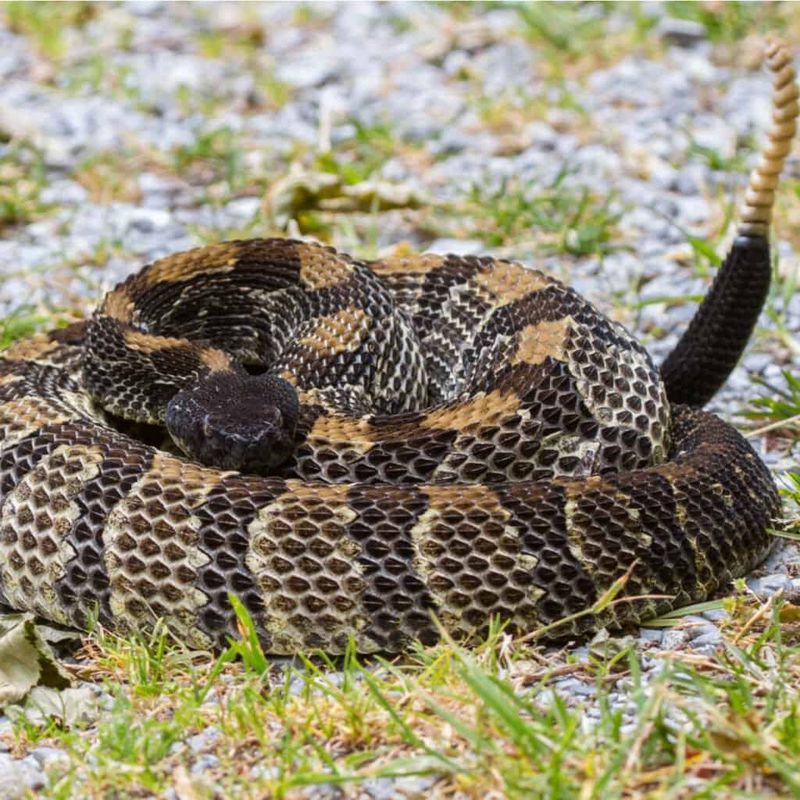
The timber rattlesnake is a rare but exciting discovery for those exploring Minnesota’s rugged terrain. These snakes, with their distinctive rattles, are often found basking on sunny rocks or hiding among leaf litter.
While they may seem intimidating, rattlesnakes are generally not aggressive unless provoked. Their presence signifies a healthy ecosystem, as they help control rodent populations. Campers should maintain a respectful distance and appreciate these reptiles from afar. Observing a timber rattlesnake in its natural environment is a reminder of the intricate web of life present in Minnesota’s wilderness.
Sandhill Crane
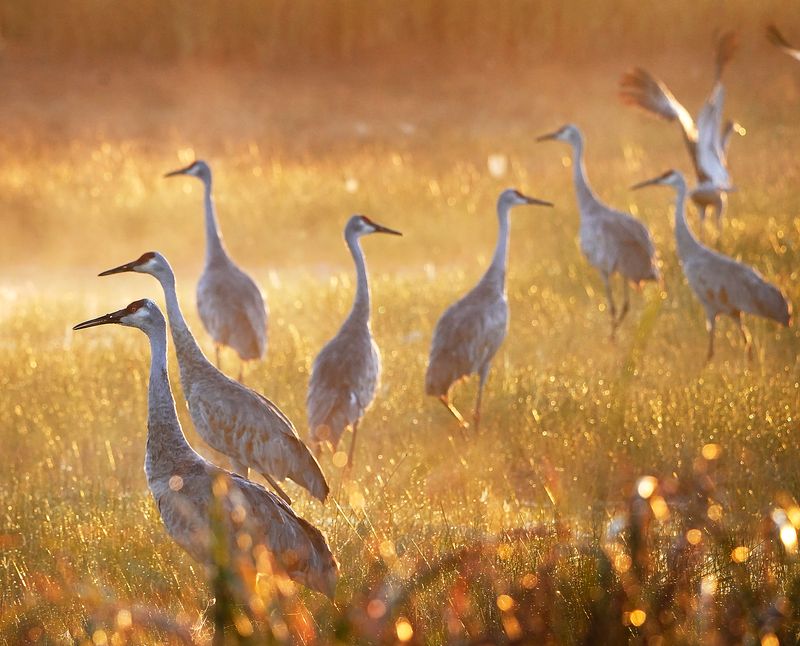
The sandhill crane is known for its elegant appearance and distinctive trumpeting calls. Found in Minnesota’s wetlands, these birds often perform mesmerizing courtship dances.
Watching sandhill cranes interact offers a glimpse into their complex social behaviors and strong pair bonds. These tall birds forage for grains, insects, and small vertebrates. Their presence in wetlands signifies a healthy environment, as they require specific conditions for nesting. Campers lucky enough to witness their dances are treated to a spectacle of grace and beauty, adding a unique aspect to their exploration of Minnesota’s natural landscapes.
Snowshoe Hare
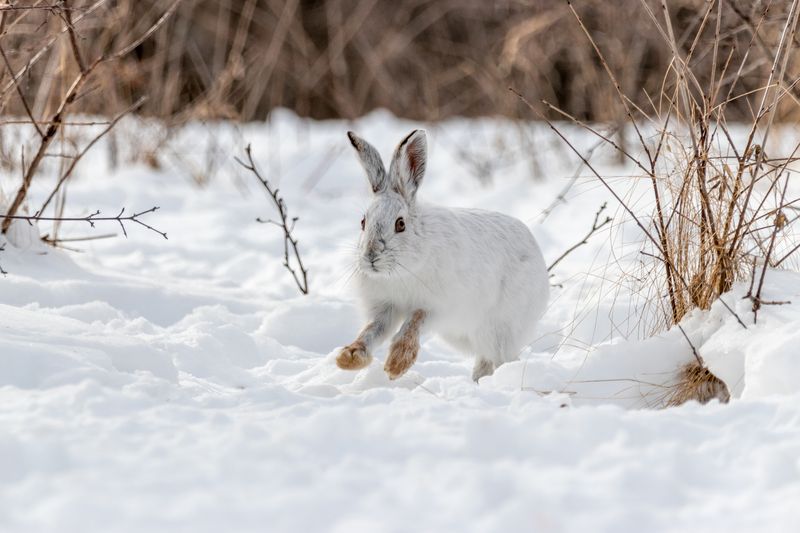
The snowshoe hare is a master of disguise, changing its coat with the seasons in Minnesota. During winter, their fur turns white, providing camouflage against the snow.
These hares are primarily active at dawn and dusk, making them a challenging yet rewarding sight. Observing a snowshoe hare reveals their agility and speed, often seen darting through the underbrush. They play a significant role in the food chain, serving as prey for predators like lynx and owls. Their seasonal adaptations highlight the dynamic nature of life in Minnesota’s forests.
American Marten
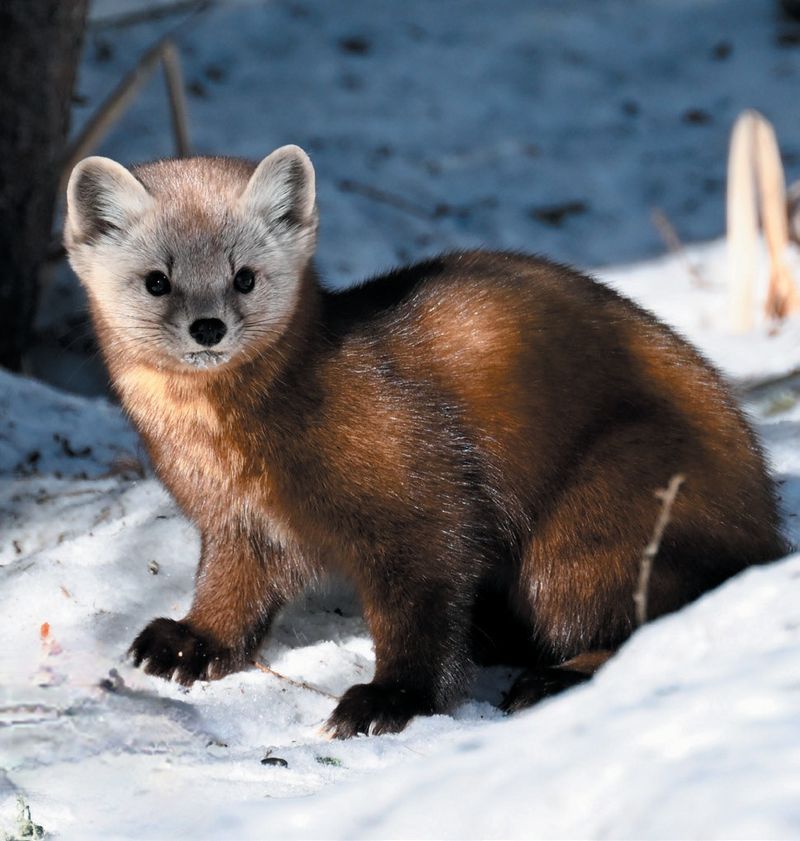
The American marten is a sleek and agile predator inhabiting Minnesota’s dense forests. With their slender bodies and bushy tails, martens are adept climbers, often hunting for small mammals and birds.
Spotting a marten requires patience and sharp observation skills, as they move swiftly through the treetops. Their presence indicates a rich and biodiverse habitat, as they rely on healthy populations of prey to thrive. For campers, encountering a marten offers a rare glimpse into the life of these elusive carnivores, underscoring the intricate balance of predator and prey relationships in the forest.
Northern River Otter
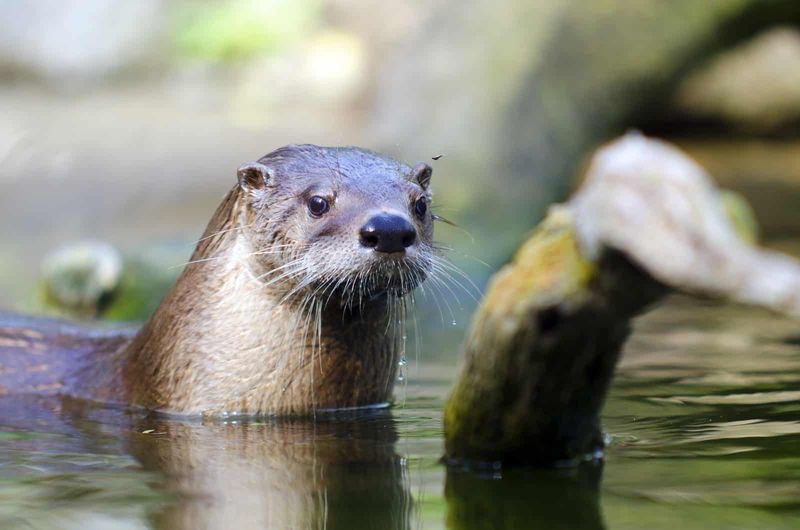
Northern river otters are playful and energetic mammals found in Minnesota’s waterways. With their sleek, agile bodies, otters are excellent swimmers, often seen sliding down riverbanks or playing in the water.
Observing otters is a joyous experience, as their social behaviors and playful antics bring an element of fun to the natural world. They feed on fish, crustaceans, and small mammals, playing a role in maintaining the balance of aquatic ecosystems. Campers near rivers or lakes may be fortunate enough to witness their lively displays, highlighting the vibrant life supported by Minnesota’s clean waters.
Blanding’s Turtle
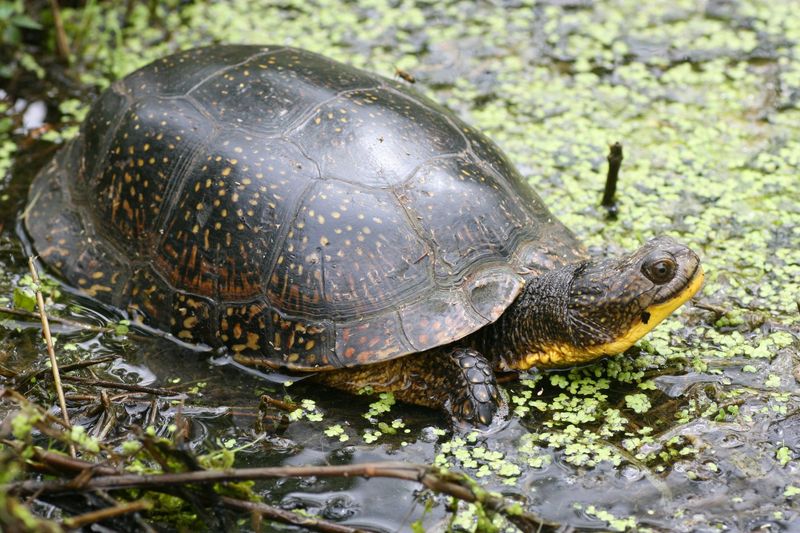
Blanding’s turtles are a unique and endangered species found in Minnesota’s wetlands. Recognizable by their bright yellow throats and domed shells, these turtles are often seen basking in the sun.
They play a vital role in aquatic habitats, contributing to the control of insect populations and plant growth. Observing a Blanding’s turtle in the wild offers a reminder of the importance of conservation efforts to protect these gentle creatures. For campers, encountering this turtle provides an opportunity to appreciate the delicate balance of life within Minnesota’s diverse ecosystems.
Pileated Woodpecker
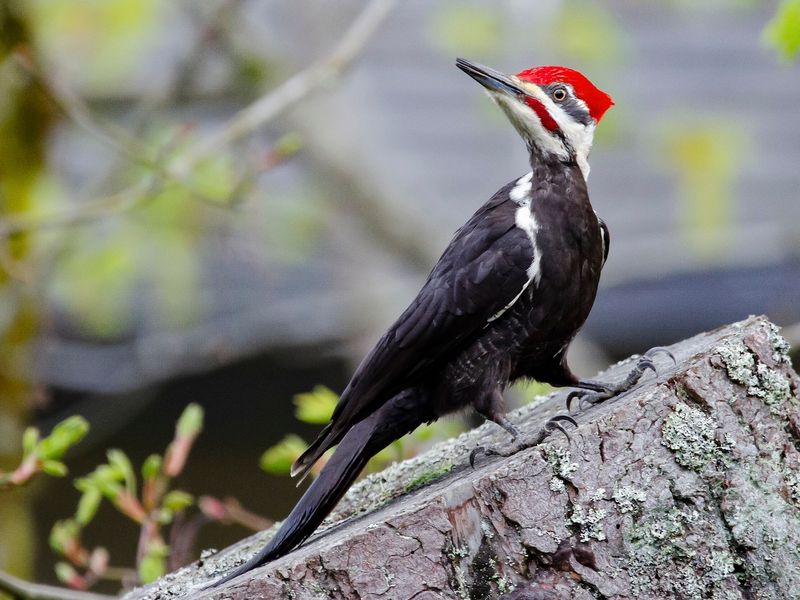
The pileated woodpecker, with its striking red crest, is a charismatic resident of Minnesota’s forests. Known for their loud drumming on trees, these birds are often heard before they are seen.
Observing their powerful beaks in action is a testament to their role in controlling insect populations and contributing to tree health. They create nesting cavities used by other species, showcasing their importance in the forest ecosystem. For campers, encountering a pileated woodpecker adds a vibrant splash of color and sound to the wilderness experience, emphasizing the rich avian diversity of the region.
Canada Lynx
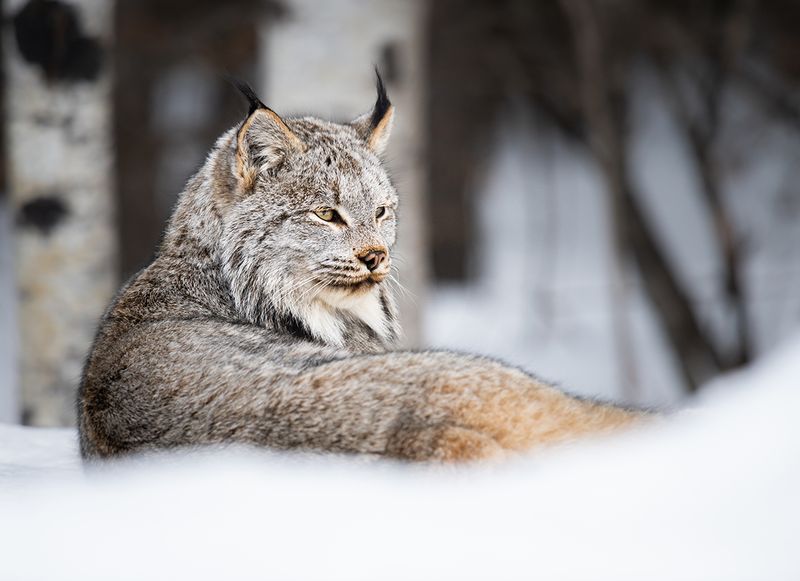
The Canada lynx is a solitary and elusive feline inhabiting Minnesota’s northern forests. With their tufted ears and large paws, lynxes are well adapted to snowy environments.
Spotting a lynx is a rare and exciting event, often requiring patience and luck. Their primary prey is the snowshoe hare, creating a dynamic predator-prey relationship. Observing their tracks in the snow provides clues to their elusive presence. The Canada lynx symbolizes the wild and untamed aspects of Minnesota’s wilderness, inviting campers to appreciate the hidden wonders of the natural world.

